Stable auroral red (SAR) arc emission observed over North America from space by the Dynamics Explorer 1 satellite.
Click on image for full size
Image provided courtesy of L. Frank and J. Craven from the Dynamics Explorer 1
The SAR Arc
The aurora we are most familiar with is the polar aurora. This is what people are talking about when they say the northern or southern lights. But there are other less-known aurora, such as SAR arcs. The SAR arcs or Stable Auroral Red arcs were discovered in 1956.
The reason that SAR arcs were discovered so late compared to polar aurora is that SAR arcs aren't usually visible. So, humans have to use instruments to tell that they are there (see image to left). SAR arcs can stretch across the entire sky.
Scientists have only known that SAR arcs existed for last 50 years. So, there are still debates as to exactly what produces SAR arcs. It is likely that this faint red glow is caused by the release of energy by the Earth's ring current system.
You might also be interested in:
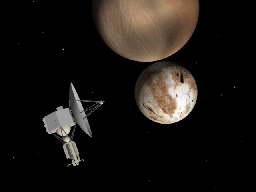
AU stands for Astronomical Units. It is a useful way to measure the distances in interplanetary space. It is the distance between the Earth and the Sun, which is about 93 million miles. For reference,
...more
The solar wind is formed as the Sun's top layer blows off into space, carrying magnetic fields still attached to the Sun. Gusts form in the solar wind associated with violent events on the Sun. Particles
...more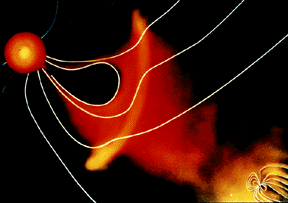
For a planet to be affected by a blob of material being ejected by the sun, the planet must be in the path of the blob, as shown in this picture. The Earth and its magnetosphere are shown in the bottom
...more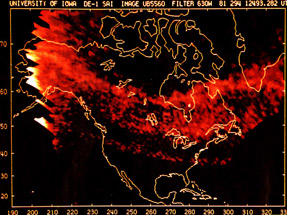
The aurora we are most familiar with is the polar aurora. This is what people are talking about when they say the northern or southern lights. But there are other less-known aurora, such as SAR arcs.
...more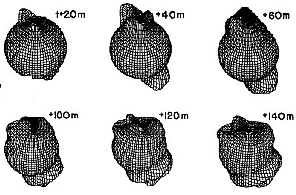
This figure shows the effect of the aurora on the atmosphere. When FAC's enter the atmosphere and create the aurora, they heat the atmosphere suddenly and abruptly. This creates an impulse which travels
...more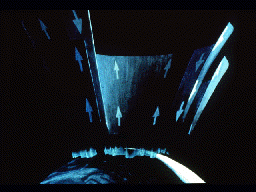
This picture shows the flowing of particles into and out of the auroral zone, as Field-Aligned currents (FAC's) take at short-cut through the atmosphere. Some of the particles entering the auroral zone
...more
This figure shows a series of images of the auroral oval as it expands over the course of about an hour in response to a geomagnetic storm. This is an animation of the auroral oval expanding.
...more














